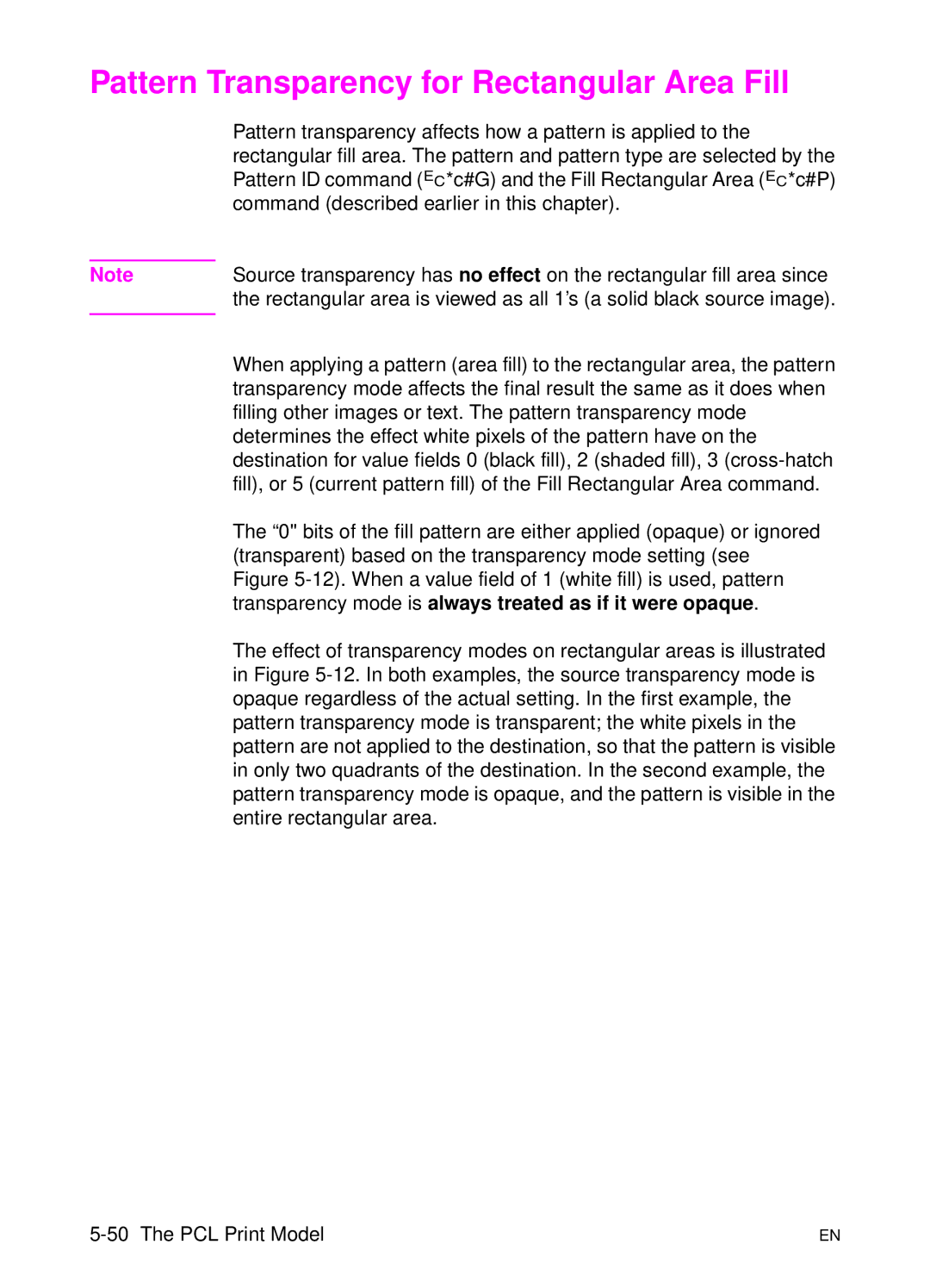Pattern Transparency for Rectangular Area Fill
Pattern transparency affects how a pattern is applied to the rectangular fill area. The pattern and pattern type are selected by the Pattern ID command (?*c#G) and the Fill Rectangular Area (?*c#P) command (described earlier in this chapter).
Note | Source transparency has no effect on the rectangular fill area since |
| the rectangular area is viewed as all 1’s (a solid black source image). |
|
|
When applying a pattern (area fill) to the rectangular area, the pattern transparency mode affects the final result the same as it does when filling other images or text. The pattern transparency mode determines the effect white pixels of the pattern have on the destination for value fields 0 (black fill), 2 (shaded fill), 3
The “0'' bits of the fill pattern are either applied (opaque) or ignored (transparent) based on the transparency mode setting (see
Figure 5-12). When a value field of 1 (white fill) is used, pattern transparency mode is always treated as if it were opaque.
The effect of transparency modes on rectangular areas is illustrated in Figure 5-12. In both examples, the source transparency mode is opaque regardless of the actual setting. In the first example, the pattern transparency mode is transparent; the white pixels in the pattern are not applied to the destination, so that the pattern is visible in only two quadrants of the destination. In the second example, the pattern transparency mode is opaque, and the pattern is visible in the entire rectangular area.
| EN |
